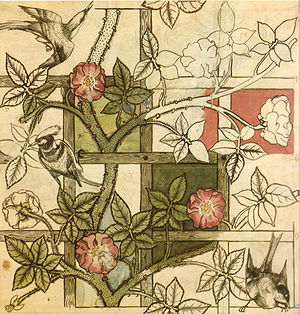
Arts and Crafts movement
Design movement (c. 1880–1920) / From Wikipedia, the free encyclopedia
Dear Wikiwand AI, let's keep it short by simply answering these key questions:
Can you list the top facts and stats about Arts and Crafts movement?
Summarize this article for a 10 years old
The Arts and Crafts movement was an international trend in the decorative and fine arts that developed earliest and most fully in the British Isles[1] and subsequently spread across the British Empire and to the rest of Europe and America.[2]

Initiated in reaction against the perceived impoverishment of the decorative arts and the conditions in which they were produced,[3] the movement flourished in Europe and North America between about 1880 and 1920. It is the root of the Modern Style, the British expression of what later came to be called the Art Nouveau movement, which it strongly influenced.[4] In Japan, it emerged in the 1920s as the Mingei movement. It stood for traditional craftsmanship, and often used medieval, romantic, or folk styles of decoration. It advocated economic and social reform and was anti-industrial in its orientation.[3][5] It had a strong influence on the arts in Europe until it was displaced by Modernism in the 1930s,[1] and its influence continued among craft makers, designers, and town planners long afterwards.[6]
The term was first used by T. J. Cobden-Sanderson at a meeting of the Arts and Crafts Exhibition Society in 1887,[7] although the principles and style on which it was based had been developing in England for at least 20 years. It was inspired by the ideas of historian Thomas Carlyle, art critic John Ruskin, and designer William Morris.[8] In Scotland, it is associated with key figures such as Charles Rennie Mackintosh.[9] Viollet le Duc's books on nature and Gothique art also play an important part in the esthetics of the Arts and Crafts movement.